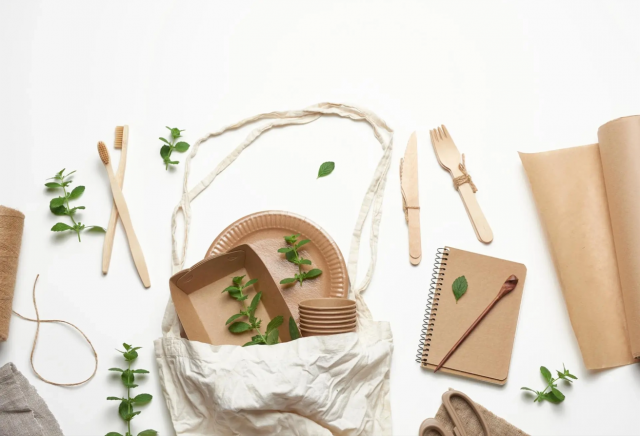please click here:
Introduction
In an era where environmental consciousness is more critical than ever, the choices we make in our daily lives significantly impact the planet. One often overlooked area is the tableware we use for dining. Traditional plastic and disposable tableware contribute heavily to pollution and landfill waste. Switching to eco-friendly tableware offers a sustainable solution that benefits both the environment and our health. This comprehensive guide explores the various types of eco-friendly tableware, their benefits, and practical tips for adopting them in your lifestyle.
Why Choose Eco-Friendly Tableware?
Environmental Impact of Conventional Tableware
Traditional disposable tableware, primarily made from plastic and polystyrene, takes hundreds of years to decompose. These materials contribute to plastic pollution, microplastic contamination, and pose threats to wildlife and ecosystems. The Great Pacific Garbage Patch is a stark reminder of the consequences of plastic waste accumulation in oceans.
Benefits of Eco-Friendly Alternatives
Eco-friendly tableware, made from renewable, biodegradable, or recyclable materials, reduces plastic pollution, lowers carbon footprints, and supports sustainable production practices. These products decompose naturally, often within months, returning nutrients to the soil without releasing harmful toxins. Additionally, many eco-friendly options are reusable, reducing waste generation over time.
Types of Eco-Friendly Tableware
Bamboo Tableware
Bamboo is one of the fastest-growing plants on Earth, making it a highly renewable resource. Bamboo tableware includes plates, bowls, cutlery, and serving trays.
-
Advantages: Durable, lightweight, biodegradable, and free from harmful chemicals like BPA. Bamboo is naturally antimicrobial and adds an elegant, rustic aesthetic to any table.
-
Uses: Suitable for everyday meals, picnics, and casual gatherings.
-
Care: Easy to clean and compostable at end of life.
Palm Leaf Tableware
Made from fallen areca palm leaves, palm leaf plates and bowls are biodegradable and compostable.
-
Advantages: No trees are cut down; plates decompose within 8 weeks; sturdy enough to hold solid and liquid foods without leaking.
-
Manufacturing: Leaves are collected, washed, sun-dried, and heat-pressed into various shapes.
-
Environmental Benefits: Each palm leaf plate replaces multiple plastic plates, significantly reducing landfill waste.
Sugarcane (Bagasse) Tableware
Bagasse is the fibrous residue left after extracting juice from sugarcane stalks.
-
Advantages: Biodegradable, microwave-safe, heat-resistant, and made from agricultural waste.
-
Uses: Ideal for disposable plates, bowls, and containers for hot and cold foods.
-
Environmental Impact: Utilizes byproducts that would otherwise be wasted, lowering reliance on fossil fuels.
Wooden Tableware
Wooden utensils and plates, often made from acacia or ash, offer a natural and durable alternative.
-
Advantages: Sustainable when sourced from managed forests or reclaimed wood; biodegradable; gentle on surfaces.
-
Aesthetic: Adds rustic charm and warmth to dining settings.
-
Reusability: Many wooden items are reusable and can last long with proper care.
Stainless Steel Tableware
Stainless steel is a recyclable and long-lasting material for cutlery and dinnerware.
-
Advantages: Durable, rust-resistant, non-toxic, and dishwasher safe.
-
Considerations: Not microwave safe; higher upfront cost but cost-effective over time.
-
Environmental Benefit: Reduces plastic waste and supports circular economy through recyclability.
Cotton Tableware
Includes organic cotton napkins, tablecloths, and placemats.
-
Advantages: Grown without harmful pesticides; reusable and machine washable; biodegradable.
-
Benefits: Reduces disposable paper waste and enhances dining aesthetics.
How to Incorporate Eco-Friendly Tableware in Your Life
For Everyday Use
-
Replace plastic plates and cutlery with bamboo or stainless steel alternatives.
-
Use reusable cotton napkins instead of paper ones.
-
Compost biodegradable disposables like palm leaf or bagasse plates after use.
Hosting Sustainable Events
-
Choose palm leaf or bamboo disposable plates for convenience without environmental guilt.
-
Pair with reusable glass or ceramic pieces for a stylish, sustainable table setting.
-
Educate guests about the benefits of eco-friendly tableware.
Care and Maintenance Tips
-
Hand wash bamboo and wooden items gently to extend lifespan.
-
Use dishwasher-safe stainless steel for easy cleaning.
-
Store biodegradable disposables in dry, airtight conditions to preserve quality.
Environmental and Health Benefits
Reducing Plastic Pollution
Switching to eco-friendly tableware significantly lowers the amount of plastic waste entering landfills and oceans, mitigating environmental pollution.
Supporting Sustainable Agriculture and Manufacturing
Materials like bamboo, sugarcane, and cotton promote sustainable farming practices that use fewer chemicals and preserve ecosystems.
Healthier Dining Experience
Eco-friendly tableware is free from harmful chemicals such as BPA and phthalates, reducing health risks associated with plastic use.
Boosting Soil Health
Biodegradable tableware decomposes into nutrient-rich compost, enhancing soil quality and supporting plant growth.
Frequently Asked Questions (FAQs)
1. What makes tableware eco-friendly?
Eco-friendly tableware is made from renewable, biodegradable, or recyclable materials that minimize environmental impact during production, use, and disposal.
2. Can biodegradable tableware be composted at home?
Some types, like palm leaf and sugarcane products, can decompose in home compost bins, though industrial composting accelerates the process.
3. Is bamboo tableware durable enough for daily use?
Yes, bamboo is strong, lightweight, and long-lasting when cared for properly, making it suitable for everyday dining.
4. Are stainless steel utensils safe and eco-friendly?
Absolutely. Stainless steel is non-toxic, recyclable, and extremely durable, making it a sustainable alternative to plastic cutlery.
5. How do I dispose of eco-friendly disposable tableware?
Biodegradable items should be composted if possible. If composting isn't available, they can be disposed of in organic waste bins where facilities exist.
Conclusion
Adopting eco-friendly tableware is a practical and impactful way to reduce your environmental footprint. From bamboo and palm leaf to stainless steel and organic cotton, numerous sustainable options cater to different needs and styles. By making conscious choices in your dining habits, you contribute to a healthier planet and inspire others to follow suit.
Article Summary
This comprehensive guide explores eco-friendly tableware options such as bamboo, palm leaf, sugarcane, wooden, stainless steel, and cotton products. It highlights their environmental benefits, durability, and health advantages while offering practical tips for integrating sustainable dining habits. Switching to eco-friendly tableware reduces plastic pollution, supports sustainable agriculture, and promotes a greener lifestyle for individuals and communities alike.






